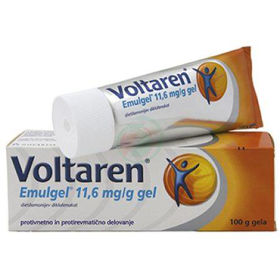Ankilozirajoči spondilitis je bolezen vezivnega tkiva, za katero je značilno vnetje hrbtenice in velikih sklepov, ki povzroči togost in bolečine. Vzrok bolezni ni znan vendar kaže, da je pomembna dednosti. Deset do 20-krat pogostejša je pri ljudeh, ki imajo starše ali sorojence s to boleznijo.
ANKILOZIRAJOČI SPONDILITIS: Splošno | Simptomi | Diagnoza in zdravljenje | Prognoza in zdravljenje | Vprašanja in odgovori | Viri/reference
Pri okoli polovici bolnikov se razvije blag, nenapredujoč artritis v kolenih in drugih velikih sklepih. Vnetje zil (vaskulitis) po vsem telesu povzroči nastanek krvnih strdkov, anevrizem (izbočene v oslabljeni steni krvne žile), infarkte in okvaro ledvic. Prizadetost prebavil se kaže s simptomi ki segajo od blagih težav do hudih krčev in driske.
Ponavljajoči se bolezenski znaki Behcetovega sindroma so za bolnika zelo moteči. Simptomatska obdobja in obdobja izboljšanj (remisije) lahko trajajo nekaj tednov, mesecev, let ali desetletij.
Slika: Najpogostnejši simptom je bolečina v križu.

Možen zaplet je ohromelost. V zelo redkih primerih se okvare živčevja, prebavil ali krvnih žil lahko končajo smrtno.
Simptomi
Blagi do zmerni izbruhi vnetja se izmenjujejo z obdobji skoraj brez bolezenskih znakov. Najpogostnejši simptom je bolečina v križu, ki je med vsakim izbruhom bolezni in pri vsakem bolniku različna. Ponavadi je hujša ponoči. Pogosta je tudi jutranja okorelost, ki se izboljša z gibanjem. Bolečine v križu in z njimi povezani mišični krč se izboljšajo pri predklonu naprej.
Zato so bolniki pogosto v predklonu in lahko v takem položaju otrdijo, če jih pravočasno ne zdravijo. Pri drugih bolnikih postane hrbtenica poudarjeno ravna in otrdela. Bolečine v križu lahko spremljajo izguba apetita, hujšanje, utrujenost in anemija. Če se razvije vnetje v sklepih, ki povezujejo rebra s hrbtenico, se zaradi bolečin zmanjša gibljivost prsnega koša in s tem zmožnost globokega dihanja.
Video vsebina: Življenje z ankilozirajočim spondilitisom: "Imam AS. Kako naprej?"

Včasih se bolečine začnejo v velikih sklepih, npr. kolkih, kolenih in ramenih. Tretjina bolnikov ima napade blagega vnetja očesne šarenice (akutni iritis), ki pa ponavadi ne okvari vida. Vnetje lahko okvari tudi srčne zaklopke. Če poškodovana vretenca pritiskajo na živce ali hrbtenjačo, se v območjih, ki jih prizadeti živci oživčujejo, pojavijo omrtvelost, mišična oslabelost ali bolečine.
Redek zaplet je sklop bolezenskih znakov, ki se pojavijo zaradi pritiska vnete hrbtenice na snop živcev, ki potekajo v hrbtenjačnem kanalu pod hrbtenjačo. Ti znaki so impotenca, nočna inkontinenca, spremenjeni občutki v mehurju in danki ter izguba refleksov v gležnjih.
Diagnoza in zdravljenje
Diagnoza temelji na bolezenski sliki, ker bolezni z laboratorijskimi preiskavami ni mogoče odkriti. Traja lahko več mesecev, preden zdravnik potrdi diagnozo. Simptomi so podobni mnogim drugim boleznim, med drugim Reiterjevemu sindromu, Steven-Johnsonovemu sindromu, sistemskemu eritematoznemu lupusu, Crohnovi bolezni in ulcerativnemu kolitisu.
Diagnoza temelji na značilnem vzorcu bolezenskih znakov in rentgenskih slikah hrbtenice in velikih sklepov, na katerih so vidne erozije v sklepu med hrbtenico in medenico (sakroiliakalnem sklepu) in zakostenele povezave med vretenci, zaradi katerih je hrbtenica otrdela. Hitrost sedimentacije eritrocitov je velika. Razen tega pri 90 odstotkih bolnikov s to boleznijo odkrijejo specifičen gen, HLA-B27.
Slika: Pri 90 odstotkih bolnikov s to boleznijo odkrijejo specifičen gen, HLA-B27.
.jpg)
Čeprav se bolezni ne da pozdraviti, se lahko specifični bolezenski znaki z zdravljenjem izboljšajo. Vnete oči in kožne spremembe se npr. izboljšajo z zunanjo uporabo kortikosteroidov. Bolniku ni priporočljivo dajati injekcij, ker se lahko na mestu vboda razvije vnetje. Huda vnetja oči ali živčevja je treba zdraviti s prednizonom ali drugim kortikosteroidom. Če so očesne okvare hude ali se po kortikosteroidih znaki bolezni ne izboljšajo, lahko uporabijo imunosupresivno zdravilo ciklosporin.
Prognoza in zdravljenje
Pri večini bolnikov se ne razvije invalidnost in živijo normalno, delovno življenje. Pri nekaterih bolezen napreduje in povzroči hude deformacije. Zdravljenje je usmerjeno v lajšanje bolečin v križu in sklepih in preprečevanje ali izboljšanje deformacije hrbtenice.
Acetilsalicilna kislina in druga nesteroidna protivnetna zdravila zmanjšajo bolečine in zavrejo vnetje. Med njimi je najučinkovitejši indometacin; stranski učinki, tveganje in cena so zelo različni.
Kortikosteroidi so koristni le za kratkoročno zdravljenje iritisa in pri hudem vnetju sklepov, kjer jih vbrizgajo neposredno v sklep. Mišične reta ksante in narkotične analgetike je treba uporabljati le kratek čas za lajšanje hudih bolečin in mišičnih krčev.
Video vsebina: Ankilozirajoči spondilitis - vzroki, simptomi, diagnoza, zdravljenje in patologija.

Z operativno zamenjavo kolka ali kolena se zmanjšajo bolečine in se izboljša funkcija sklepa, ko se razvijejo erozije ali sklep otrdi v upognjenem položaju. Dolgoročni cilj zdravljenja je vzdrževanje dobre drže in okrepitev močnih hrbtnih mišic. Z dnevnimi vajami bolnik utrdi mišice, ki nasprotujejo sključeni drži.
Vprašanja in odgovori
Kaj povzroča razvoj ankilozirajočega spondilitisa?
Vzrok bolezni ni znan vendar kaže, da je pomembna dednosti. Deset do 20-krat pogostejša je pri ljudeh, ki imajo starše ali sorojence s to boleznijo. Pri 90 odstotkih bolnikov s to boleznijo odkrijejo specifičen gen, HLA-B27.
Kakšni so simptomi ankilozirajočega spondilitisa?
Simptomi vključujejo bolečine v hrbtu, otrplost zgodaj zjutraj in sključeno držo. AS lahko povzroči druge simptome, kot so izguba apetita, hujšanje, utrujenost, vročina, anemija, vnetje oči in prebavne bolezni[1].
Kdo najpogosteje dobi ankilozirajoči spondilitis?
Simptomi ankilozirajočega spondilitisa se najpogosteje pojavijo pred 40. letom starosti, pri nekaterih ljudeh pa se simptomi pojavijo pred 16. letom. Pri moških je bolj verjetno, da bodo diagnosticirali bolezen kot pri ženskah[2].
Ali je ankilozirajoči spondilitis ozdravljiv?
Za ankilozirajoči spondilitis ni zdravila, vendar je na voljo zdravljenje za lajšanje simptomov. Zdravljenje lahko tudi pomaga odložiti ali preprečiti proces združevanja hrbtenice in otrdelosti. Ta zdravljenja lahko pomagajo tudi, če imate neradiografski aksialni spondiloartritis[3].
Kakšni so zapleti ankilozirajočega spondilitisa?
AS lahko povzroči zaplete v vsakodnevnem življenju in povzroči dodatna zdravstvena stanja:
- psoriaza
- zmanjšana gibljivost
- poškodbe sklepov
- osteoporoza in zlomi hrbtenice
- bolezni srca in ožilja
- sindrom Cauda equina
- vnetna črevesna bolezen
- iritis[3]
Viri in reference
Veliki zravstveni priročnik za domačo uporabo, Založba mladinska knjiga
- Ankylosing Spondylitis - https://www.hopkinsmedicine.org
- Who Gets Ankylosing Spondylitis? - https://www.webmd.com
- Ankylosing spondylitis - https://www.nhs.uk






 Facebook
Facebook
 Instagram
Instagram
 info@moja-lekarna.com
info@moja-lekarna.com

